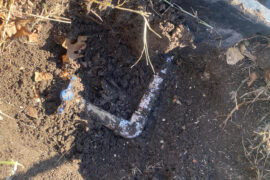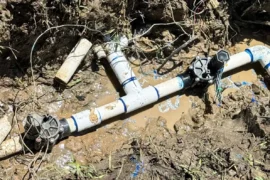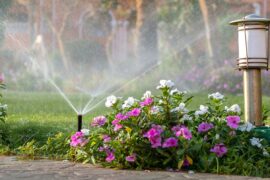Is your sprinkler system giving you the cold shoulder by refusing to spring into action? Fear not, green-thumbed warriors! Before you let frustration rain on your parade, remember that even the most reliable sprinkler systems can have their off days. But worry not, because this guide is your secret weapon against the silent treatment from your sprinkler system. From understanding the nuts and bolts of your irrigation ally to conquering common quandaries, we’ve got you covered. So, strap on your gardening gloves, and let’s turn those dry patches into lush, verdant bliss!
Common Problems and Solutions
01. Clogged or Dirty Sprinkler Heads
Clogged sprinkler heads are a common issue in sprinkler systems, often leading to reduced functionality or complete failure. The accumulation of dirt, sand, and other debris obstructs the water flow, making it necessary to clean these filters regularly.
Signs of Clogged Sprinkler Heads
- Sprinkler Heads That Do Not Rise: This is a clear indication of clogging. When dirt accumulates, it can prevent the sprinkler heads from popping up, leading to uneven water distribution.
- Weak or Non-Existent Water Flow: If you notice that the water flow from your sprinkler heads is weaker than usual or completely absent, this can be a sign that the heads are clogged.
- Visible Debris: Upon close inspection, you may find debris visibly lodged in the head or filter. This is a direct sign that cleaning is required.
Cleaning Process
- Turn Off the Water Supply: Safety first. Ensure the water supply is shut off to prevent any accidents or wastage of water.
- Remove the Nozzle and Filter: Carefully disassemble the sprinkler head, removing both the nozzle and the filter.
- Clean the Filter Thoroughly: Use a soft brush and running water to clean the filter. Ensure all debris is removed before reassembling.
- Replace the Parts: Once cleaned, reassemble the sprinkler head, ensuring all parts are securely in place.
02. Broken Sprinkler Heads Due to Lawn Mowers
Sprinkler heads can become damaged due to lawn mowers and other heavy equipment. This kind of damage often results in leaks or non-functioning heads.
Identifying Broken Heads
- Heads That Don’t Pop Up: A clear sign of damage is when sprinkler heads fail to emerge from the ground.
- Erratic Water Spray: If the heads pop up but spray water inconsistently or in an unusual pattern, this indicates damage.
Replacement Process
- Identify the Broken Head: Carefully examine your sprinkler system to find which head needs replacement.
- Purchase a Matching Replacement: Ensure you buy a sprinkler head that matches your system’s specifications for a seamless fit.
- Unscrew the Damaged Head: Carefully remove the damaged sprinkler head from the system.
- Install the New Head: Screw in the new head, ensuring it’s correctly positioned at ground level to prevent future damage.
03. Broken Supply Pipe Due to Tree Roots
Tree roots growing into and breaking supply pipes is a less obvious but significant issue, often resulting in leaks and disrupted water flow.
Detecting Pipe Damage
- Wet Spots in the Landscape: Unexplained wet areas can be a sign of leaking pipes underground.
- Unusually Low Water Pressure: A sudden drop in water pressure in certain areas of your system might indicate a pipe breach.
Repairing Pipe Damage
- Locate the Damaged Section: Use the signs of leakage to find where the pipe is damaged.
- Expose the Pipe: Carefully dig around the pipe to reveal the damaged section without causing further damage.
- Remove the Damaged Section: Cut out the damaged part of the pipe.
- Install a New Pipe Section: Use appropriate connectors and adhesive to install a new section of pipe, restoring the integrity of your system.
- Test the Repair: Once the glue has dried, turn on your system to ensure the repair is successful and there are no leaks.
Conclusion
A well-functioning sprinkler system is key to a healthy landscape. Regular maintenance and prompt attention to problems can ensure your system operates efficiently and effectively. Remember, if you’re ever in doubt, don’t hesitate to call a professional for assistance.





